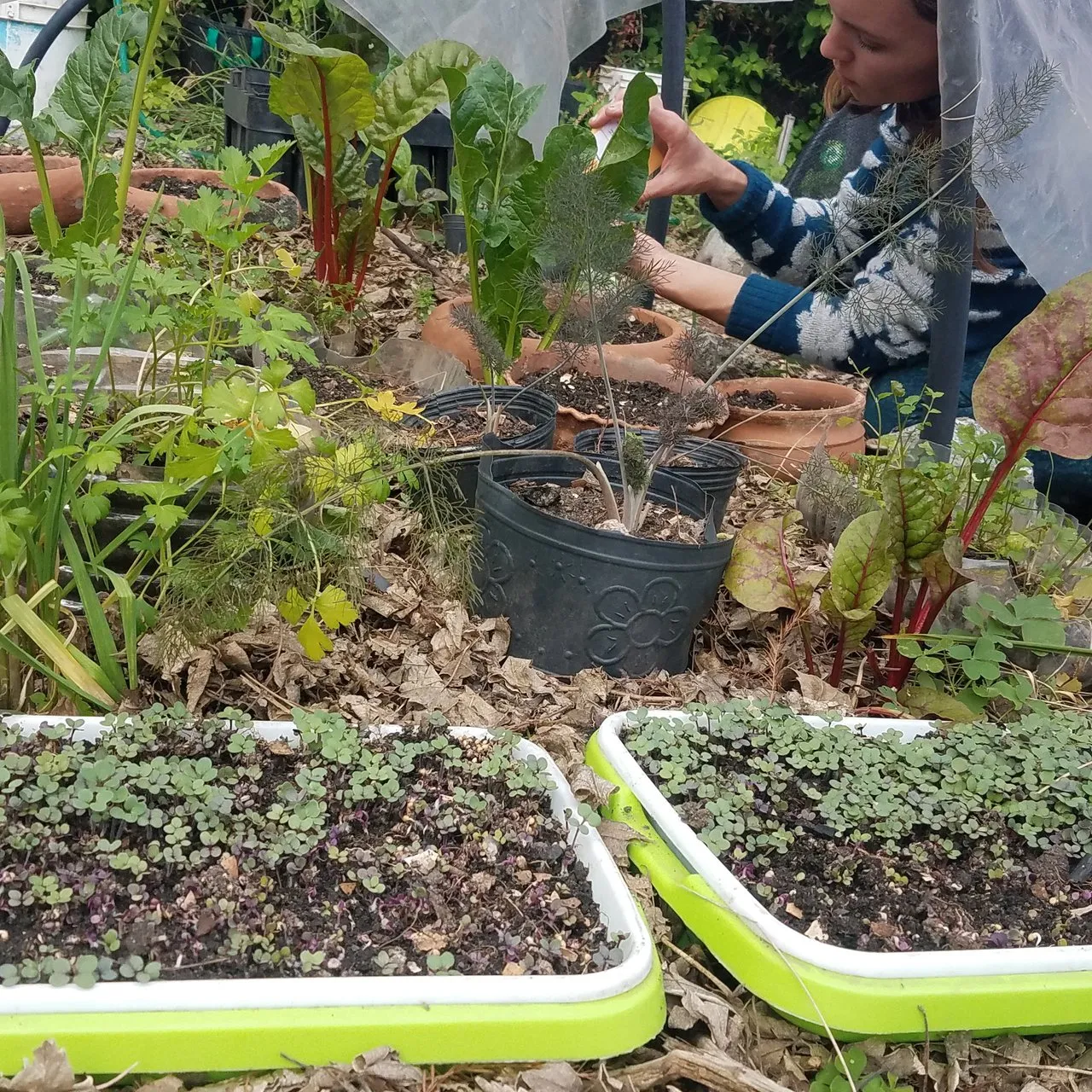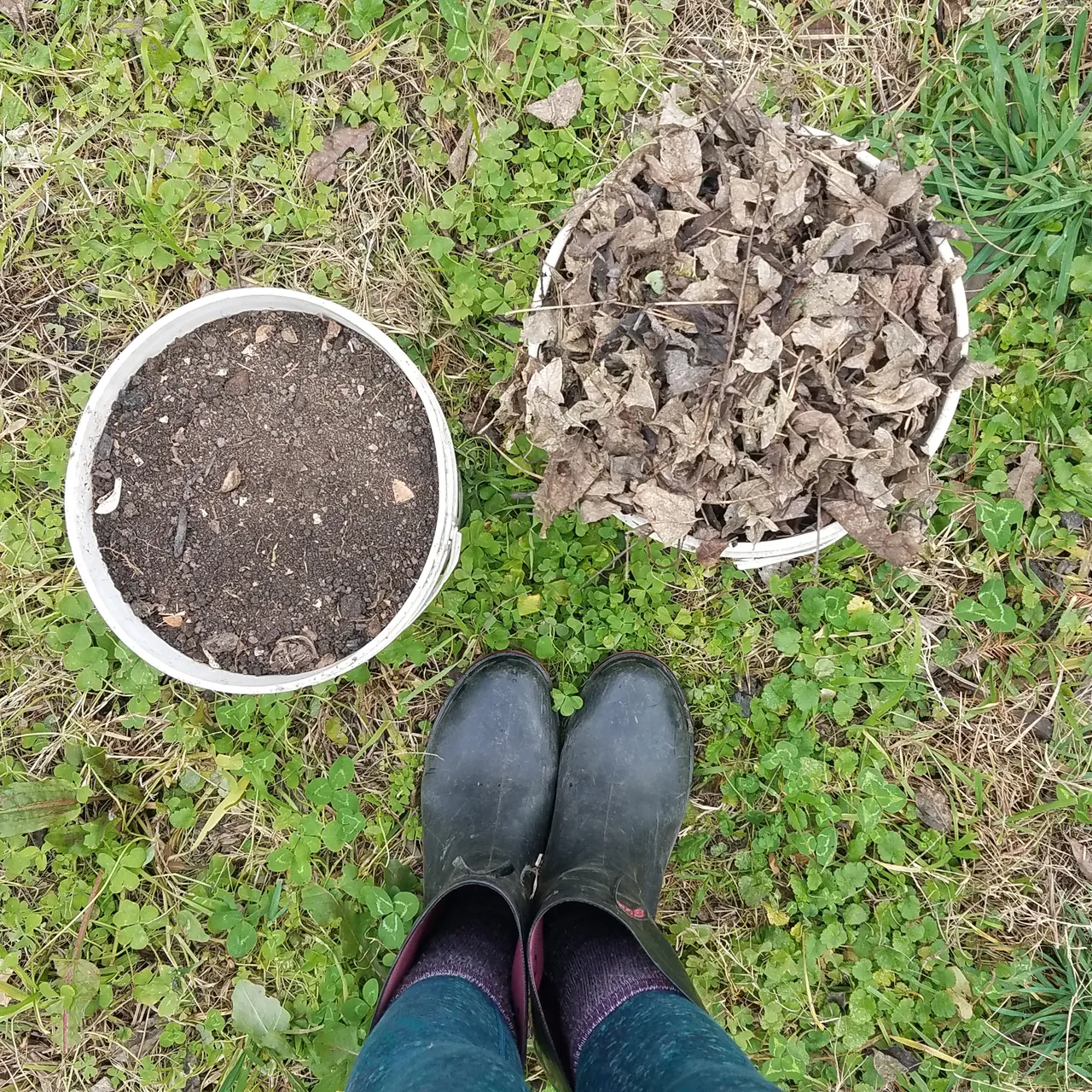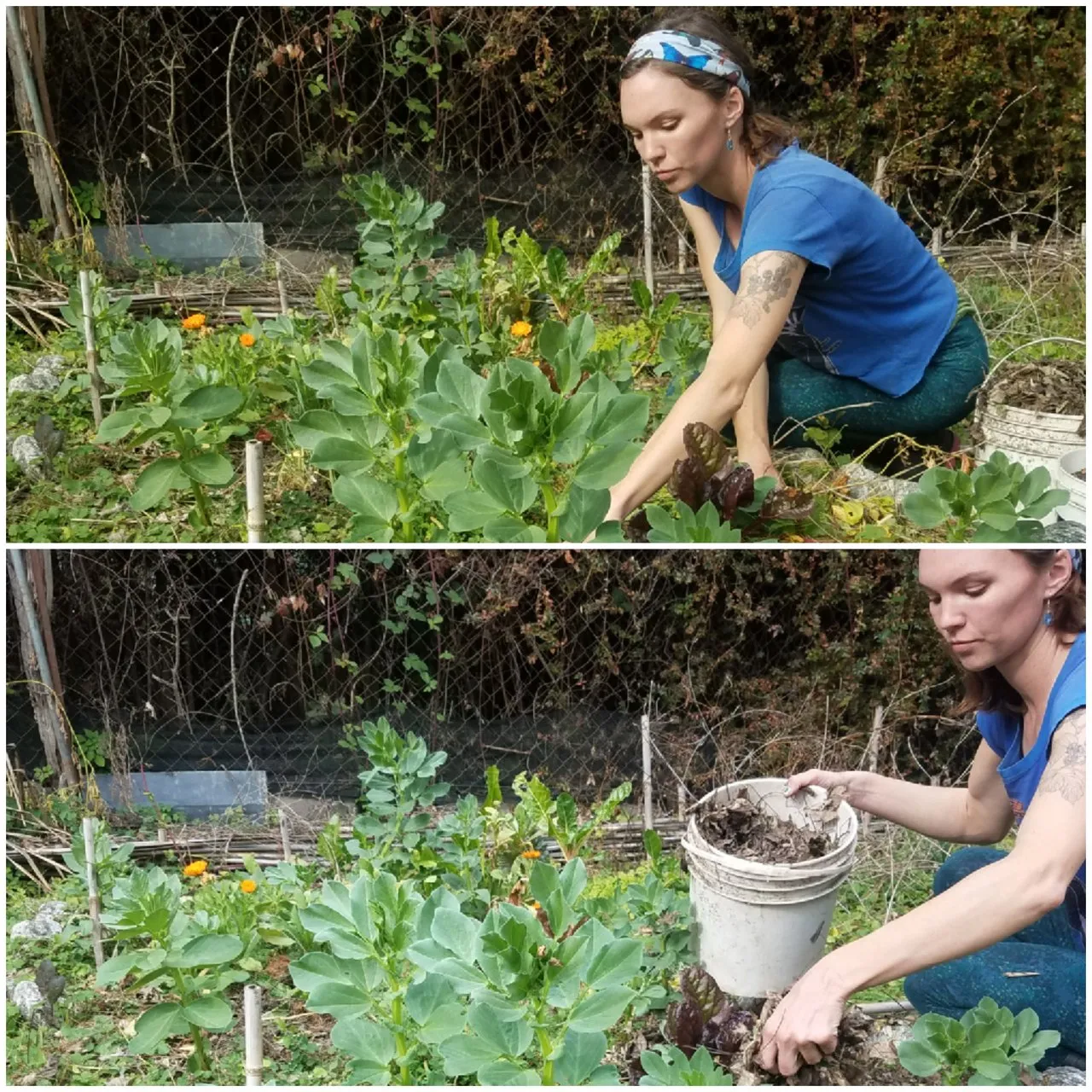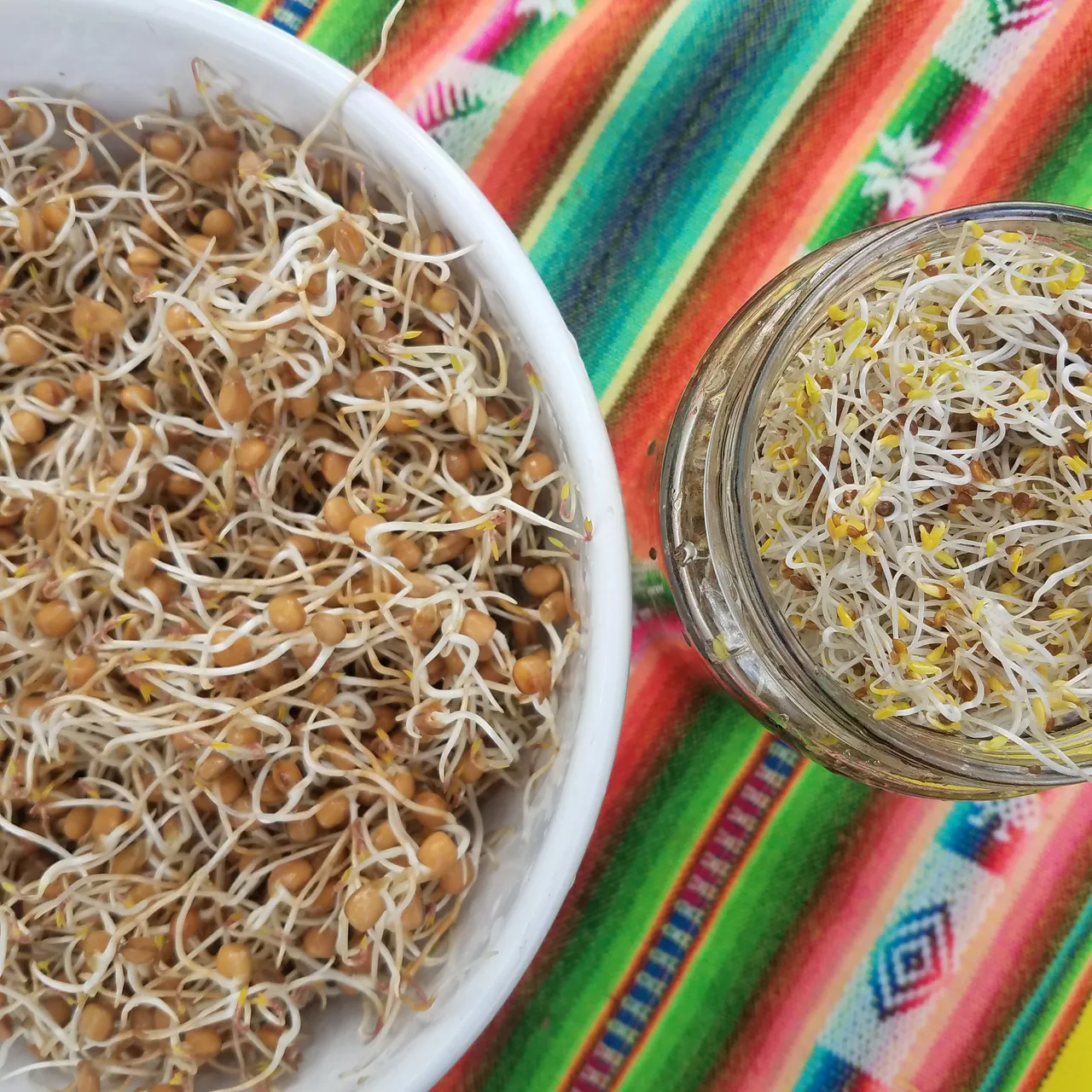
Back again in Argentina I am reconnecting with my herb and greens garden that my partner so graciously kept watered while I was away these past couple of months. During the month of June we had several freezing nights which killed off the last of the fall flowers and crops that couldn't take the cold. Although winter is the season of rest when the garden is mostly asleep, there are still chores to do as I prepare for a busy spring coming soon. So, I wanted to take you all along with me for my daily garden chores.

Two of the stars of the winter garden are the fava beans and swiss chard plants. I love to eat swiss chard steamed then blended for creamy dips or chopped up and added to omelettes. This will be the first year I harvest fava beans for food as last year I only had enough to save seeds. I remember trying fava beans added to stew in Peru -- do let me know if you have a delicious fava bean recipe to share in the comments.

This week we have had a spell of warm weather so I am seeding micro-greens in pots and trays in the garden bed which is protected by a plastic roof. My favorite micro-greens for winter are lettuce and mustard greens. Lettuce tends to grow quite slowly due to the lack of sunlight but the mustard have really taken off and I have been harvesting them to eat sometimes raw, though more often lightly steamed in stir fry.

Mustard greens are easy and quick to grow all year and the seeds can be purchased cheaply as mustard seeds are widely available -- just look in the condiment section of your local bulk food store. I grow micro greens in shallow pots, micro-green trays, and even recycled plastic gallon bottles cut long-ways. I have actually written and entire post just about growing micro greens on a small scale which you can find here.
Caring for the Soil::
Tending to this garden (and all the gardens where I have lived over the years) has taught me so much about living in balance with nature. Here I plant and harvest food and medicine all year. Thus I must give back to the Earth the nutrients needed for the cycle to continue.

Finished compost made from food scraps and horse manure and fallen leaves from elsewhere on the land are the ingredients I feed the soil with. But, first, there is weeding to be done. Since returning in mid June have made a goal to weed one square meter of the garden per day, even on the busiest of days and so far I have been able to keep with that schedule.

After weeding I add the compost and leaves, water it all in and let the fava beans, calendula flowers, and swiss chard do their thing.
The Indoor "Garden" ::
I wanted to add a section on food that can be grown in winter even if it is freezing outside and that is where sprouting grains comes in! Here in the picture I have lentil sprouts on the left and alfalfa on the right. Each have been sprouting for about a week.

The lentils are going to be boiled for our lunch today while the alfalfa have much more growing to do. Like micro-greens, sprouts can be eaten raw, but, it does depend on your tastes and digestive system. If you are curious on how to sprout grains and legumes, I have written another post a couple of years ago, check it out!
Winter is a time for rest and nourishment, so I usually find myself steaming lighting greens or sprouts - or boiling them in the case of lentils - to add home grown nutrition and warmth to a meal.
Winter or Summer, I wish you all happy gardening!